How To Repair A Generator? – Fix The Genset Your Self
The significance of generators in residential properties is noticeable. A generator allows you to perform all useful tasks and also helps you by keeping your home run on electricity while your area is already suffering from an electrical outage. That usually happens in the case of hurricanes, or heavy storms. But there comes a certain point when your generator stops working in a proper way as it should. That is why you must check it regularly to make sure your generator is in good condition to work when you need it.
It doesn’t matter if you are using your generator at the office, home, or for outdoor camping, the most annoying thing can be the situation when you need your generator most, it fails to operate. Situations such as fuel line clogs, filter breaking, or pull cords tear can happen anytime. So, you will face delayed starting of your generator or it may doesn’t ignite at all.
But no more worries! In this article, we will provide some information about the most common problems that can take place in your generator and different possible ways to repair a generator. You can ask for help from technicians or you can also do it yourself. So, let’s start it.
Is Generator Repair Needed Or Has Something Else Happened?
It is stated by many technicians that people usually call about repair requirements when their generator doesn’t run without noticing if the power is still there or out. But if your generator has stopped running without any reason you know, then check if it’s a false alarm.
First of all, check with your neighbors to find out if the power is out. If the power is actually out, it means it is an outage and no repair is needed for your generator. The second thing you should check is if there is electricity available at your meter base. If the screen on the meter base is black, it means the power is out.
Most Common Generator Problems
Here are some common problems your generator may experience at some point during its lifespan and there are some possible solutions to deal with them correctly:
Leaks:
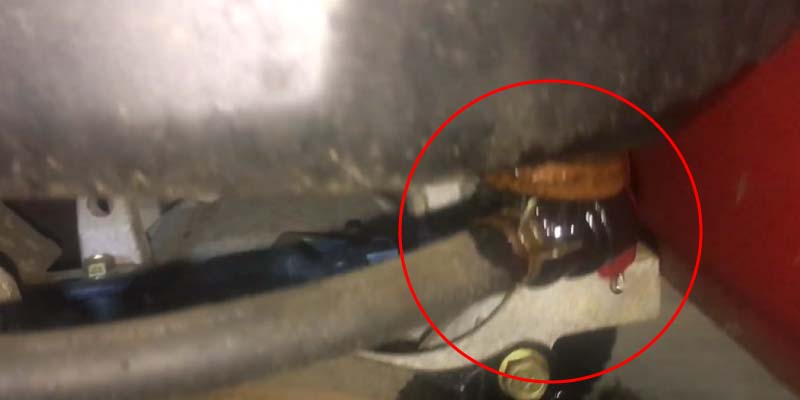
Most of the generator problems that arise can be due to leaks. There could be fuel, oil, or coolant leaks but these things can be prevented by performing some regular maintenance checks. By periodic inspection of your generator, you can notice these issues and also some others before any chance of their progression.
Most common fuel leaks occur due to overfilling of the fuel tank. This can happen when the pump system of fuel malfunctions or it can be due to simple human error. The best solution to this can be a qualified maintenance professional who will refuel your generator to ensure it is being done properly.
Wherever you experience coolant leaks, it can be due to blocked heater hoses. These hoses become worn out when subject to the high temperature generated by the block heater.
The oil leaks are not always due to oil leaking, they can also be due to wet stacking also known as engine slobber. The exhaust system accumulates unburned fuel, condensed water, acids, carbon particles, and lubrication. Due to this build-up, the engine slobber appears just like an oil leak.
No Fuel:
Another common reason for the generator not turning on is simply your unit is out of fuel. If your unit is not starting properly, the first thing you should check is fuel. If the amount of fuel is more than enough then it can also result in leaks and should be repaired simultaneously.
If your system runs out of fuel in an unexpected way, while the level gauges show there’s plenty of it present, it could be due to malfunctioning of gauges. The gauge can stick in its place by indicating that there is enough fuel when the generator is almost empty.
Generator Failure:
If your generator is not turning on even if there is plenty of fuel present, it can be due to several issues. It could be due to air inside the fuel system, leaks in the line, or issues with the check valves.
It is recommended to get your generator inspected by a technician to determine the cause of generator failure.
Low Coolant:
Another thing that creates generator problems is the generator being low on coolant. Depending on the situation of the unit, a generator may give off an alarm or just turns off altogether whenever the coolant is low or the temperature rises higher. If you experience adding coolant on a frequent basis, you should always inspect your generator for leaks.
If the coolant is low, it can lead to engine overheating which can further damage the other components that would be needed to repair or replace completely. Overheating also ruins the alternator, bearings, exhaust valves, rotor, and even more. At a certain point, you may need to find more expensive ways to repair those parts or you can also prefer to buy a new generator.
Dead Battery:
The battery of a standard generator can last for several years before moving towards replacement. However, with regular maintenance, the life of the battery can be extended. So, it won’t be wise enough to overlook this condition.
Checkout our guide about Replacing the generator battery
Fuel Leaking Into The Tank:
One other thing that can hinder your generator to operate is a newer unit that is not being used on regular basis. The strict emission regulations are making the fuel system of today’s generators more vulnerable to air. If air is stuck in the system, it will lead to the operation failure of the generator.
If your unit is older, and the same issue is being observed, you will need to check valves that may have malfunctioned or there could also be a leak in the line. For this, you can also take help from a professional’s inspection to find out further reasons.
Control Malfunction:
There is a control panel present in most of the generators that can be used to adjust its settings. Some critical information related to the generator will also be displayed including oil pressure, battery voltage, coolant temperature, oil pressure, and other things.
Some problems in the control panel can arise due to human error by which a generator fails to switch on the automatic controls. If there is some other issue with the control panel, then an expert technician will fix it for you.
Block Heater Wear:
The block heater is responsible for warming the coolant to make its flow easy through the engine block. It will keep the engine block heated which then prevents the oil from thickening.
Block heaters are also beneficial in minimizing the wear and tear on the generator to allow for more stabilized temperatures for the cooling system. As block heaters run on a constant basis, there will come a point at which they will fail to perform well, and there will be a definite need to replace their installed parts.
If you are struggling to clean and reduce the THD levels of your dirty power here is the guide.
How To Repair A Generator
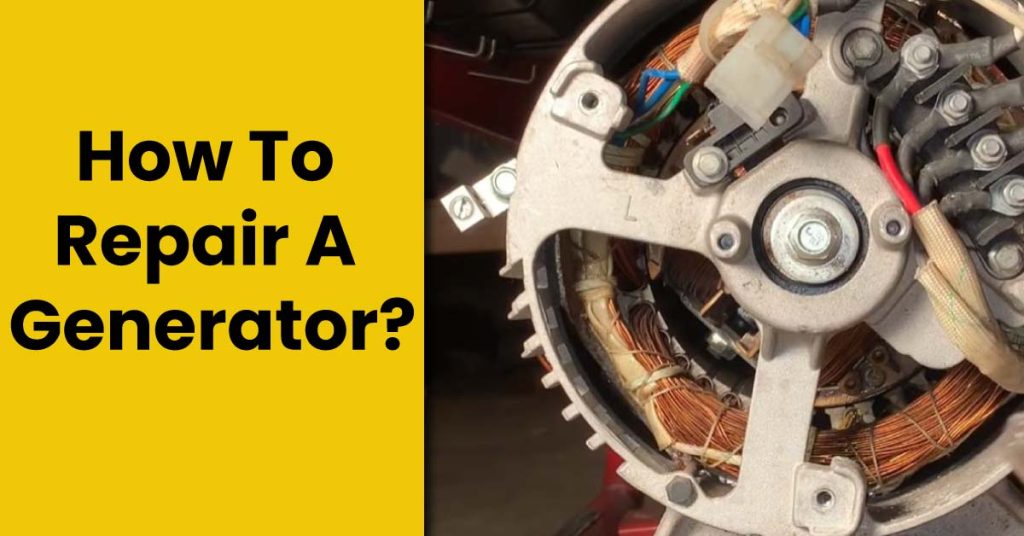
Replacing a failed generator component means repairing. If you keep on replacing the failed parts, it will only result in repeated failures. If the generator is overloaded, it will also result in repeat failure.
Utility power failure can occur when the generator is loaded. If the emergency power is interrupted due to repeated failures, it can cost downtime and the repetition of the repair process.
The most proven or established repair practice can completely reduce the risk of repeated component failures. Sometimes, a newly replaced part also fails to operate because of something that wasn’t identified in the troubleshooting steps of the repairing process. While the successful processes isolate the cause of failure.
Know The Warning Signs:
Before dumping a temperamental generator, it is necessary to understand what is the real problem. It is easy to replace the parts. If a generator is experiencing start-up delays, it will only need filter replacement or fuel.
Replace A Torn Pull Cord:
The commonly observed issue in portable generators is the classic case of a broken pull cord. Luckily, these are not difficult to replace and can be done quickly even in the presence of a flashlight during extreme weather.
Though replacing a broken cord seems easy and simple by just winding it up and letting it go, there is one tricky thing to look for and that is spring. Before wrapping the new cord around the starter, it is crucial to ensure the spring has been wounded as far as it can go. If you failed to do so, it will cause the cord to hang from the generator without a functional spring in order to bring it back into the housing. This will ultimately prevent your generator from starting at all.
Replace A Fuel Filter:
There will be a small plastic fuel filter inside your generator if you look into it carefully. That filter will avert dirt, dust, and debris present in gasoline to spoil the fuel system. These filters perform their function exceptionally but some become clogged from all debris that can be accumulated over time. When these filters start clogging up, the fuel system will receive little or no fuel at all which will result in the generator’s failure to operate properly or even completely.
To fix it, detach the fuel line where it is bonded to the carburetor and run your generator while paying attention to whether or not any fuel is seeping through the filter. If fuel is not passing through the filter, then it means you have to replace the filter. Sometimes you can deal with it by cleaning, but generator filters are mostly cheap to replace.
Check The Breakers:
Occasionally, your generator runs flawlessly except for one thing- it is not putting out any electricity. This can prove frustrating if you experience a power outage at your home, and you are in dire need of it.
In such cases, there can be your breakers that are at fault. But you don’t need to fear it. Replacement of a breaker is simply just ordering a proper set designated by the manufacturer of the generator and installing them accordingly. Some handymen can do it on their own but you can also seek help from technicians.
Checkout our guide about How to Connect Generator to House without Transfer Switch
Clear Out The Gas Vent:
On the gas cap, there’d be either a valve or a small hole that acts as a vent. That vent allows the flow of gas from its storage area to the fuel system by effectively powering the system.
But when the vent gets clogged, there won’t be necessary airflow reaching towards the gas, so the gas won’t reach the carburetor. On the contrary, if the vent is only slightly plugged, the system will run but in a poor way. Clearing the gas vent is simple just like poking a small hole with the help of a wire piece or even by a shot of compressed air. This needs to be fixed as soon as possible.
Maintenance Of Generator:
If your portable generator is not working properly, it can feel like the world is ending, specifically when you wait until a power outage to examine it when you need it to work now. But one best thing you can do to avoid frustration issues is by taking good care of your generator all the time with proper maintenance and servicing to fix the associated problem.
You can do it by running your generator every few months or routinely checking its fuel and lines, the cleaning air filter, and more, you can assure that your generator is ready when you need it most.

Josh is a highly skilled electrician with specialized expertise in the field of generators. With years of experience under his belt, he has established himself as an expert in all aspects of generators, ranging from installation and maintenance to troubleshooting and repairs. Josh’s in-depth knowledge of electrical systems and his commitment to staying updated with the latest industry advancements make him a reliable and sought-after professional.

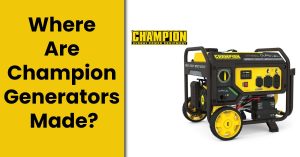
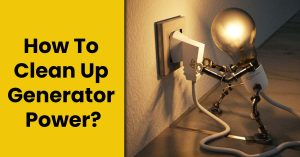
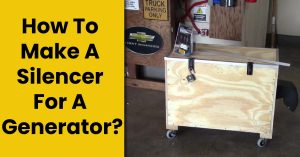
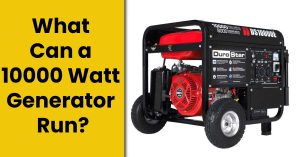
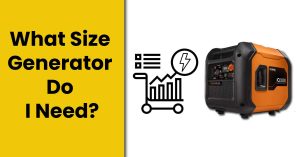

All this is about the gas engine that runs the generator, nothing about repairing the generator itself. That is where I have my problem. The engine runs fine but the generator has stopped producing adequate power or bogs down under load well below its stated efficient power output.
Can the generator be repaired itself, brushes, windings, relays etc., etc???
Hey Benjamin!
Sorry for the inconvenience we have written a separate guide about what are the possible reasons the generator won’t produce power make sure to have a look.
Thanks, Regard.
Sami